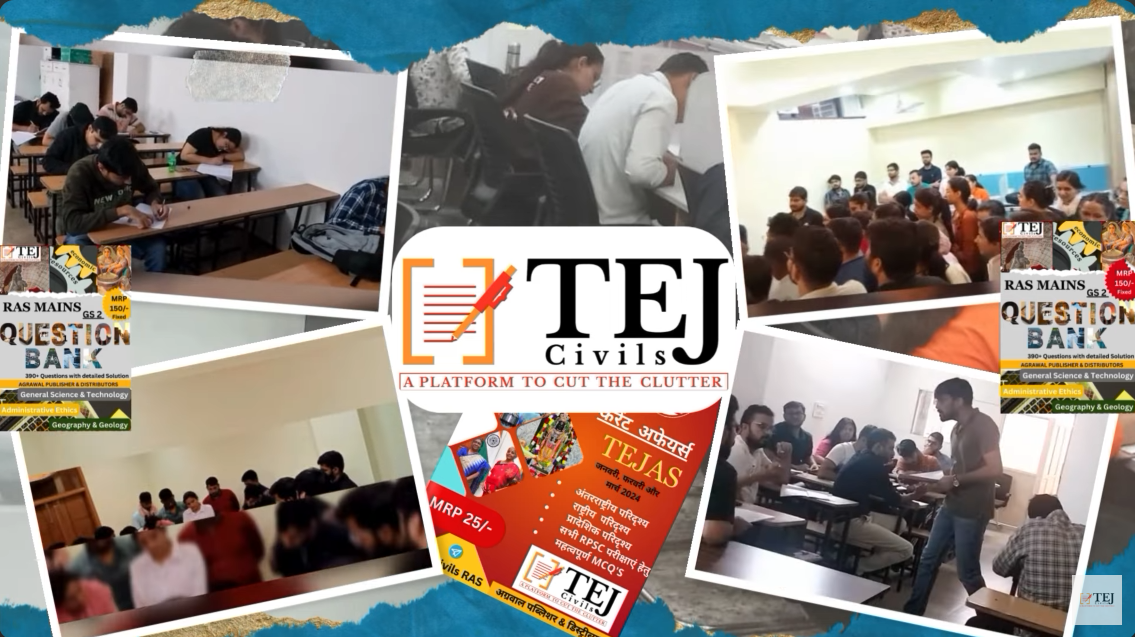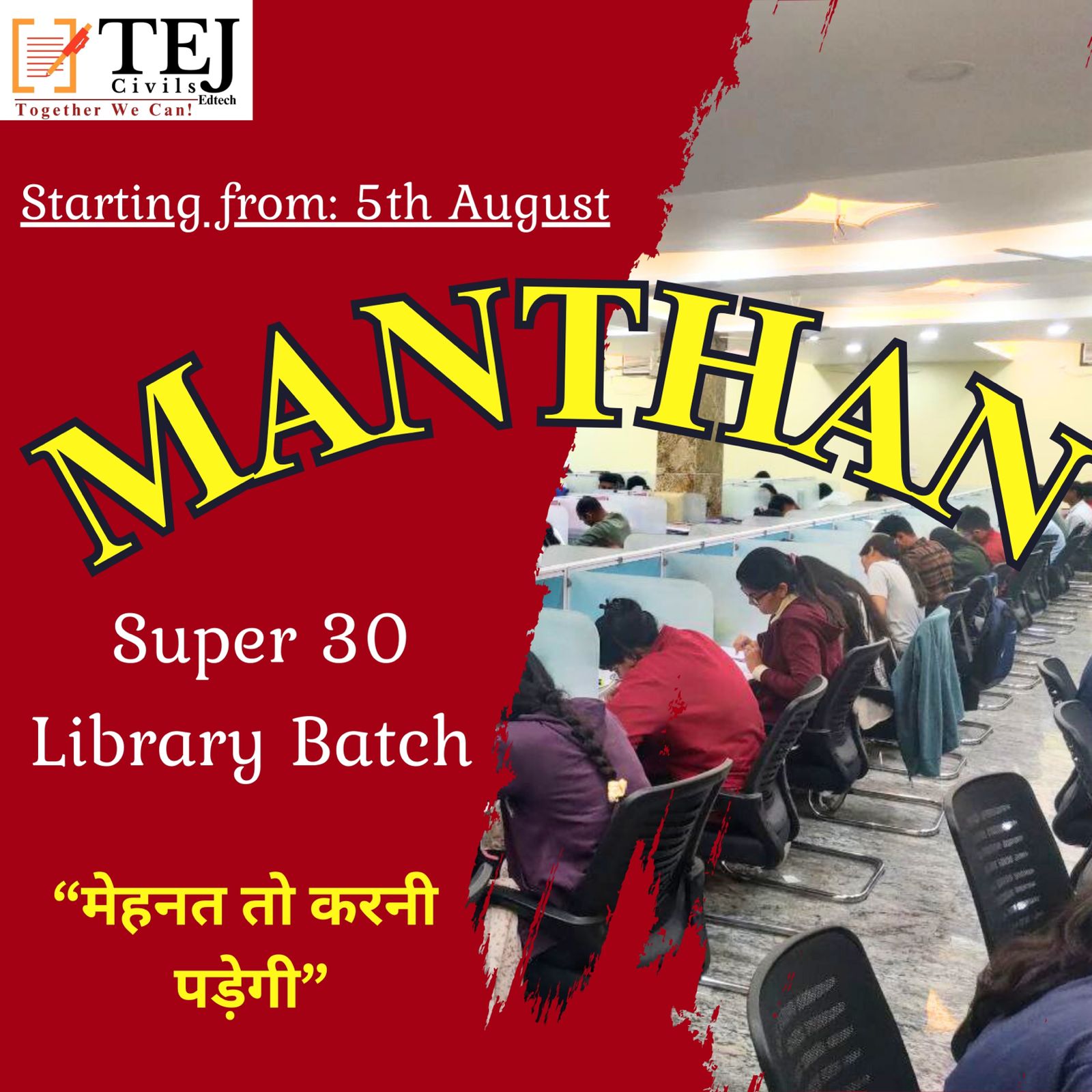Science & Technology
XISRO successfully launches PSLV-C58 XPoSat mission.
XPoSat Launch
India's Achievement: 2nd country (after the USA) to launch an X-ray Polarimeter Satellite.
Mission Details: First dedicated satellite by ISRO with a 5-year mission life.
Aim: Investigate X-ray polarization from intense space sources.
Orbit: Low Earth Orbit (650 km), 6-degree inclination.
Payloads:
- POLIX: X-ray polarimeter
- XSPECT: X-ray spectroscopy & timing
Additional Info:
- POEM-3: PSLV Orbital Experimental Module-3 (In-orbit experimental platform).
- NISAR: NASA-ISRO Synthetic Aperture Radar for Earth observation.
Launch Vehicle: PSLV-C57
Mission Type: Solar Observation
Orbit Distance: 1.5 million km (L1 point)
Observation Focus: Continuous solar study without Earth's magnetic field interference
Significance: 1st space-based solar observatory
Duration: 5 years
ISRO's Second Astronomy Observatory-Class Mission: After Astrosat (2015)
ISRO's Polymer Electrolyte Membrane Fuel Cell (FCPS) Test
Test Status: Successfully tested on orbital platform POEM3
Launch Vehicle: PSLV-C58
Design and Development: Designed by Vikram Sarabhai Space Center (VSSC)
INS Kabra Docks In Colombo Amid Warship Deployment In Arabian Sea
- INS Kabra: Named after Andaman and Nicobar island.
- Part of: Car Nicobar class patrol vessels by GRSE for the Indian Navy.
- Details:
- Eighth in a series of 10 Fast Attack Crafts.
- Designed for cost-effective patrol, anti-piracy, and rescue missions.
- First water jet propelled vessels in the Indian Navy.
Union Cabinet Approves National Quantum Mission (NQM)
Quantum Computing
- Definition: Based on quantum theory, utilizing principles like superposition and entanglement.
- Processing Power: Offers exponential processing capabilities over classical computers.
- Key Elements:
- Qubits: Operate in states of 0, 1, or both simultaneously.
- Entanglement: Qubit states are interconnected, enabling faster computations.
Generative AI
- Definition: AI that creates new content, including text, images, audio, and video.
- Training: Leveraged on large datasets to generate rather than just recognize patterns.
- Guidance: Content generation is directed by prompts.
- Examples: ChatGPT, Bard.
Gamma Ray Astronomy PEV Energies Phase-3 (GRAPS-3)
- Purpose: Designed to study cosmic rays using an array of air shower detectors and a large area muon detector.
- Location: Ooty, India.
- Conducted By: Tata Institute of Fundamental Research.
- Objective: Investigate the acceleration mechanisms of cosmic rays.
About Cosmic Rays
- Definition: Cosmic rays are the most energetic particles in the universe.
- Interaction with Earth's Atmosphere: They induce particle showers, which include:
- Electrons
- Photons
- Muons
- Protons
- Neutrons
- Energy Range: Observed over a wide spectrum from \(10^8\) to \(10^{20}\) eV.
India’s First Hypervelocity Test Facility at IIT Kanpur
Hypervelocity Expansion Tunnel Test (Jigarthanda)
- Developed by: IIT Kanpur, India’s first hypervelocity expansion tunnel.
- Funding: Supported by ARDB, DST, and IIT Kanpur.
- Capabilities: Simulates speeds of 3-10 km/sec under hypersonic conditions.
- Applications: Essential for ISRO’s Gaganyaan mission and DRDO's hypersonic missile projects.
Samarth Centre
- Purpose: Enhances competitiveness in India’s capital goods sector.
- Support for MSMEs:
- Trains MSMEs in Industry 4.0 technologies.
- Organizes seminars, workshops, and knowledge-sharing programs.
- Provides consultancy and incubation support for start-ups and MSMEs.
Unusual Bridging Fluorine Discovered
A one-of-a-kind discovery involving interhalogen ions has unveiled unusual bridging fluorine, highlighting unique chemical interactions and properties within the halogen group.
Halogens Overview
- Group: 17 on the periodic table.
- Elements: Fluorine (F), Chlorine (Cl), Bromine (Br), Iodine (I), Astatine (At), Tennessine (Ts).
- Reactivity: Highly reactive; do not occur freely in nature.
- Valence Electrons: Seven in the outer shell, contributing to high reactivity.
- Properties:
- Fluorine: Most reactive, most abundant in Earth's crust.
- Iodine: Least reactive, solid at room temperature.
- Phase at Room Temperature:
- Solid: Iodine, Astatine.
- Liquid: Bromine.
- Gas: Chlorine, Fluorine.
- Characteristics:
- Powerful oxidizing agents with high electronegativities.
- Form hydrogen halides, which are potent acids.
ISRO to Launch Weather Monitoring Satellite INSAT-3DS
INSAT-3DS
- Type: Third-generation meteorological satellite, successor to INSAT-3D/3DR.
- Funded by: Earth Sciences Ministry (MoES).
- Orbit: Geosynchronous Transfer Orbit (GTO).
- Launch Vehicle: GSLV-F14.
SOFIA (Stratospheric Observatory for Infrared Astronomy)
- Setup: Infrared telescope mounted on Boeing 747 SP aircraft.
- Operated by: NASA and German Space Agency.
- Features:
- World's largest airborne astronomical observatory.
- Conducted 10-hour flights for deep infrared observations.
- Operation: Ended prematurely in 2022 after 12 years of service.
Tata Advanced Systems Ltd (TASL) to Launch in SpaceX Rocket
India's First Spy Satellite
- Ground Control Center: To be operational in Bengaluru for guidance and image processing.
- Coverage: Existing ISRO satellites offer limited coverage; currently, data is obtained from U.S. companies.
- Usage: Supports armed forces in gathering classified intelligence.
- Recent Launch: INSAT-3DS launched on GSLV F14 from Sriharikota.
- Collaboration: Working with NASA on synthetic aperture radar satellites.
Tata Advanced Systems Limited (TASL)
- Sector: Tata Group’s space and defense division.
- Objective: Drive "Make in India" initiatives and collaborate with global OEMs.
SpaceX
- Founded: 2002 by Elon Musk.
- Headquarters: Hawthorne, California.
- Activities:
- Designs and builds spacecraft.
- Provides launch and satellite communication services.
India Selects 4 Pilots for Its First Manned Space Mission - Gaganyaan
Four 'Gaganvir' of India
- Mission: Gaganyaan - India's first human space mission, scheduled for 2024-2025.
- Crew:
- Prashanth Balakrishnan Nair
- Ajit Krishnan
- Angad Pratap
- Subhanshu Shukla
- Goal: Pave the way for an Indian space station by 2035 and a lunar landing.
About Gaganyaan Mission
- Announcement: Made in 2018 by the Indian government.
- Objective: Send a 4-member crew to a 400 km orbit for a 3-day mission.
- Agency: Led by the Indian Space Research Organisation (ISRO).
Genome India Project (GIP)
Overview
- Launch: 2020 by the Department of Biotechnology (DBT), led by the Indian Institute of Science (IISc).
- Goal: Sequence 10,000 Indian genomes for personalized medicine.
- Focus: Study genetic diversity for better disease prediction and targeted treatment.
Other Related Initiatives
- Human Genome Project (2003): Mapped 92% of the human genome.
- IndiGen: Sequencing genomes of Indian ethnic groups.
- GA4GH: Ensures the ethical use of genomic data.
India Conducts First Human Clinical Trial for Haemophilia A Gene Therapy
Hemophilia A (H)
- Cause: Mutation in the gene responsible for the production of clotting factor VIII.
- Symptoms: Variation in clotting factor levels, which is typically higher in males.
- Treatment:
- Replacement therapy: Infusion of clotting factors to help blood clot.
Gene Therapy
- Goal: To provide a more permanent solution by correcting the gene mutation responsible for haemophilia A.
- Significance: The clinical trial marks a significant step in the treatment of haemophilia A in India.
Largest Stellar Black Hole Ever Discovered in the Milky Way
Key Points:
- Name: Gaia BH3
- Mass: 33 times that of the Sun (largest ever discovered)
- Distance: 2,000 light-years from Earth (second closest)
- Location: Aquila Constellation
First Indigenous Gene Therapy for Cancer Treatment Launched
Details:
- Location: Indian Institute of Technology (IIT) Bombay
- Announcement: Launch of first indigenous CAR-T cell therapy for cancer treatment
- Features:
- World's cheapest CAR-T cell therapy
- Developed and manufactured in India
- In partnership with Tata Memorial Hospital
DRDO Successfully Test-Fires Indigenously Developed Cruise Missile (ITCM)
Details:
- Organisation: Defence Research and Development Organisation (DRDO)
- Achievement: Successful flight test of indigenously developed cruise missile (ITCM)
- Place: Integrated Test Range, Chandipur (Odisha)
Indian Army Gets Akash Teer System
- System: Akash Teer
- Objective: Strengthen Indian Army's air defence capabilities
- Developer: Bharat Electronics Limited (BEL)
Bharat Electronics Limited (BEL)
- Founded: 1954
- Headquarters: Bengaluru, India
- Owner: Government of India (PSU)
ISRO Conducts Successful Ignition Test to Enhance LVM3 Capability
- Location: ISRO Propulsion Complex (IPRC), Mahendragiri, Tamil Nadu
- Objective:
- Develop a new semi-cryogenic engine with 2,000 kN thrust.
- Increase LVM3’s payload capacity for future missions.
DRDO Successfully Test Fires SMART System
- SMART System Test: Next-gen missile-based lightweight torpedo delivery system
- Range: 643 km (supersonic missile) + 20 km (light torpedo)
- Enhancement: Strengthens Indian Navy's anti-submarine capabilities
Varunastra:
- Developed by: DRDO
- Range: 40-50 km
- Effective in: Deep and shallow waters
New Wheat Seed Variety, HD 3386
- Released by: Indian Agricultural Research Institute (IARI)
- Variety: High-yielding wheat variety, HD 3386
About IARI:
- Founded: 1905 (Pusa, Bihar)
- Current Location: Delhi
- Administered by: Indian Council of Agricultural Research (ICAR)
CSIR's 'Phenome India' Project Achieves Target of 10,000 Samples
- Project: Phenome India - CSIR Health Cohort Knowledgebase (PI-Check)
- Objective: Study risk factors for non-communicable (cardio-metabolic) diseases in India
About CSIR:
- Founded: 1942
- Headquarters: New Delhi, India
- Objective: Promote scientific knowledge and industrial development in India
IN-SPACe Awarded Leadership Award for "Public Policy"
- Recipient: IN-SPACe (Indian National Space Promotion and Authorization Center)
- Headquarters: Ahmedabad, Gujarat
- Established: 2020 (Part of space sector reforms)
- Nodal Department: Department of Space (DoS)
- Objective: Facilitate private sector participation in India's space sector
DRDO Successfully Test-Fires India's 1st Indigenous Anti-Radiation Missile, Rudram-II
- Launch Platform: IAF Sukhoi-30 MKI aircraft
- Test Success: Successful testing of propulsion, control, and guidance algorithms
- Missile Range: Rudram-II - 350 km (Rudram-I - 150 km, Rudram-III - 550 km under development)
ISRO Develops PraVaHa CFD Software for Aerodynamic Design and Analysis
- Developed by: Indian Space Research Organisation (ISRO)
- Full Name: Parallel RANS Solver for Aerospace Vehicle Aero-Thermo-Dynamic Analysis (PraVaHa)
- Objective: Analysis of aerodynamics and thermodynamics of spacecraft (launch vehicle, re-entry vehicle)
- Purpose: Provides data required for design
India and France Collaborate on the ‘Trishna Mission’ for Climate Data
- Mission: TRISHNA (Thermal Infrared Imaging Satellite)
- Launch: 2025, by ISRO (India) & CNES (France)
- Instruments:
- TIR (CNES): Surface temperature mapping
- VSWR (ISRO): Vegetation monitoring
DRDO Begins Preliminary Study on Development of Indigenous Conventional Submarines
- Project-76: Indigenous diesel-electric attack submarine
- Goal: Build 12 submarines with AIP (Air Independent Propulsion) and 3,000-ton displacement
- Key Features:
- Indigenous weapon control
- Lithium-ion batteries
- Significance: Reduced foreign reliance, increased self-sufficiency
- Timeline: Prototype by 2028
- Inspiration: Based on Project-75 (French) & Project-75I (German/Spanish)
India Successfully Test-Fires New Generation Anti-Radiation Missile ‘Rudram-1’
- Rudram-1 Missile: Air-to-surface anti-radiation missile
- Developed by: Defence Research and Development Organisation (DRDO)
- Integrated with: IAF's Sukhoi-30MKI fighter jets
- Purpose: India's first indigenous anti-radiation missile
NASA to Train Two ISRO Gaganyaan Astronauts under 'Axiom-4'
- ISRO Astronauts for ISS: 2 of 4 trained Indian astronauts selected for the ISS mission
- Mission Launch: Planned before October 2024
- Mission Name: Axiom-4, in collaboration with NASA and Axiom Space
- India-U.S. Collaboration: NASA to provide advanced training to Indian astronauts
Indian Scientists Develop Open-Source Tool for the Thirty Meter Telescope (TMT)
- Thirty Meter Telescope (TMT): Advanced observatory with a 30-meter primary mirror
- Collaboration: India, U.S., Canada, China, Japan
- Purpose: Explore the early universe, galaxies, black holes, stars, and exoplanets
- Indian Role: Developed NIR star catalogue for NFIRAOS (Near InfraRed Adaptive Optics System)
Agni-4 Ballistic Missile Successfully Test-Fired in Odisha
- Agni-4 Missile: Medium-range ballistic missile
- Launch Location: Odisha’s Chandipur Integrated Test Range
- Command: Under Strategic Forces Command (SFC), part of India’s Nuclear Command Authority (NCA)
- Launch System: Surface-to-surface, mobile, two-stage solid fuel
- Development: Designed by DRDO (Defence Research and Development Organisation)
Cabinet Approves ‘Vigyan Dhara’ Scheme
- Approval: Approved by the Union Cabinet under PM Modi
- Objective: Strengthen India’s Science, Technology, and Innovation (STI) ecosystem
- Alignment: Supports Viksit Bharat 2047 and Anusandhan National Research Foundation (ANRF)
- Background: Merges three DST schemes to improve STI
India Launches World's First Mobile-Launched Hybrid Rocket, RHUMI-I
- Developer: Space Zone India (Chennai) with Martin Group
- Launch Site: Thiruvithandhai, Chennai, Tamil Nadu
- Significance:
- India’s first reusable hybrid rocket and the world’s first mobile hybrid rocket.
- Expected to improve launch efficiency and reduce operational costs.
- Launch Method: Mobile launcher (special truck)
- Payload: 3 CubeSats and 50 PICO satellites (for data on global warming and climate change)
Space Zone India:
- Headquarters: Chennai, Tamil Nadu
- Focus: Low-cost space solutions, education, and outreach
- Chairman: K. Megalingam
BioE3 (Biotechnology for Economy, Environment and Employment) Policy
Key Points
- Approval: The Union Cabinet, chaired by PM Modi, approved the policy by the Department of Biotechnology.
- Objective:
- Promote high-performance biomanufacturing.
- Foster innovation in biotechnology for economy, environment, and employment.
- Goals:
- Align with government initiatives like ‘Net Zero’ carbon economy and ‘Lifestyle for Environment’ (LiFE).
- Promote circular bioeconomy and sustainable development.
- Expand the workforce and create biotechnology jobs.
The World Health Organization (WHO) Declares Mpox (Monkeypox) a Public Health Emergency of International Concern (PHEIC)
Mpox Virus and WHO Declaration
- Declared by WHO: Public Health Emergency of International Concern (PHEIC).
- Mpox Virus:
- Cause: Monkeypox virus, genus Orthopoxvirus.
- Symptoms:
- Red rashes
- Mucosal lesions
- Fever
- Headache
- Muscle pain
- Swollen lymph nodes
ISRO’s Gaganyaan Mission to Feature Humanoid Vyommitra in 2025
Gaganyaan Mission and Vyommitra
- Mission: Gaganyaan (Planned for 2025)
- Organization: Indian Space Research Organisation (ISRO)
- Objective: Testing technology prototype Vyommitra for future human space missions.
Vyommitra
- Type: AI-based semi-humanoid robot
- Introduced: 2020
ISRO Overview
- Founded: 1969
- First Satellite: Aryabhata (1975)
- Headquarters: Bengaluru, India
Vertical Launch Short Range Surface to Air Missile (VL-SRSAM)
Purpose
- Purpose: Ship-borne system to neutralize aerial threats, including sea-skimming targets.
Development
- Development: By DRDO, tested by Indian Navy and DRDO from a land-based vertical launcher.
PARAM Rudra Supercomputers
Development
- Development: Indigenously developed under the National Supercomputing Mission (NSM).
- Purpose: High-Performance Computing (HPC) for applications such as forecasting tropical cyclones, heatwaves, droughts, etc.
- Locations: IITM, Pune, and NCMRWF, Noida.
- Names: 'Arka' and 'Arunika'.
National Supercomputing Mission (NSM)
- Launch: Launched in 2015 to provide supercomputing infrastructure.
- Objective: To serve researchers, academics, MSMEs, and startups.
- Collaboration: MeitY and DST.
- Implementation: CDAC, Pune, and IISc, Bengaluru.
India's Space Missions: Chandrayaan-4 and Indian Space Station
Chandrayaan-4 (2027)
- Announcement: Made by ISRO chief Dr. S. Somnath on 23rd August (National Space Day).
- Launch Year: 2027.
- Mission Objective: To further India's exploration of the Moon and its surface.
Indian Space Station (2028)
- First Module Launch: Scheduled for 2028.
- Features:
- Initial module will carry robots.
- 5 modules will be sent to space progressively.
First Successful Test of Long Range Glide Bomb 'Gaurav'
Gaurav Flight Test
- Organization: DRDO (Defence Research and Development Organization).
- Platform: IAF’s Sukhoi-30 MK-I.
- Gaurav Features:
- Type: Long Range Glide Bomb (LRGB).
- Launch Method: Air-launched.
India's First Self-Powered Indoor Air Quality Monitor - 'Pawan Chitra'
Pawan Chitra Details
- Product Name: Pawan Chitra
- Type: Self-Operated Indoor Air Quality Monitor
- Developed by: CSIR-National Institute for Interdisciplinary Science and Technology (NIIST)
ISRO's GSAT-20 Satellite Launched Successfully
GSAT-20 Details
- Satellite: GSAT-20/GSAT N-2
- Launch Vehicle: SpaceX Falcon 9 rocket
- Launch Location: Cape Canaveral, Florida, USA
- Orbit: Placed in Geosynchronous Transfer Orbit (GTO)
- Partnership: New Space India Limited (NSIL) signed a contract with SpaceX in January 2024
World's First Wooden Satellite Launched
Satellite Details
- Satellite Name: LignoSat
- Location: NASA Kennedy Space Center, Florida, USA
- Rocket: SpaceX
- Developers: Kyoto University & Sumitomo Forestry, Japan
India's First Analog Space Mission Launched in Leh
Mission Details
- Location: Leh, Ladakh
- Led by: ISRO's Human Spaceflight Centre
- Objective: To simulate life in an interplanetary habitat and explore challenges of establishing a base station beyond Earth.
India Successfully Test-Fired Pinaka Rocket Launcher
Test Details
- Test Conducted: Successful flight test of the Guided Pinaka Weapon System by DRDO.
- Testing Phases: Conducted in three stages under PSQR (Provisional Staff Qualitative Requirements).
India's First Artificial Intelligence (AI) Data Bank
Key Details
- Launched by: Ministry of Science and Technology.
- Objective: To enhance national security.





















